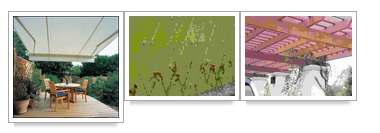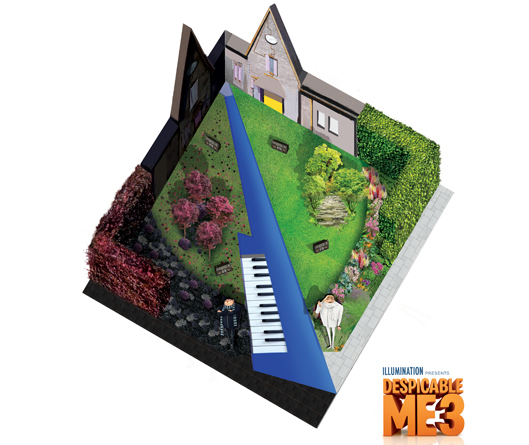
Nothing spoils a nice garden more than an unsightly view. Oil tanks, buildings, roads, street lighting and neighbouring windows are just a few of the common visual problems garden owners face. But all is not lost, there are a number of things you can do to limit the impact of negative visual elements. Below are my top five.
1. Screening.
Screening is the technical term for ‘hiding’ and probably the most obvious approach. The key things to consider include the size and scale of the screen needed, the most appropriate material and potential for drawing attention to the element. Oftentimes people will over compensate with screening, installing huge evergreen plants or masses of trellis. This usually draws attention and can negatively impact light levels. In reality you should limit screening to controlling views from specific locations. More often than not this can be achieved through the use of a well placed tree or specimen shrub. If you are going to use living screens such as hedges, consider using deciduous varieties which retain a strong structure. Beech and Hawthorn are good examples. Being deciduous, they allow more light to penetrate during the darker winter months. Avoid coniferous species unless you have a large site and are willing to control them. Other options include pleeched hedging and climbing plants on wires (trellis can be fussy and attract attention).
Less is more when it comes to screening. Add too much as you run the risk of highlighting what you’re trying to hide.

2. Sensory Distraction.
This method is often overlooked but can be a very effective support for screening. The idea is simple, use other senses to draw attention away from the negative view. For example, the sound of a water feature, the scent of a well-placed flowering plant and steps located at the point of view can all serve to distract the viewer.
Dealing with negative views doesn’t have to rely solely on the visual sense. Think creatively.

3. Focalization.
This approach uses the visual sense to distract or lead the viewers eye and is very appropriate where a view cannot be appropriately screened. Similar to sensory distraction, this approach uses a well placed focal element (tree, shrub, sculpture, feature and so) to attract and hold viewer attention. Most designed gardens will have a specific focal element, the key here is to locate it so it draws the viewers eye away. Where there are problems located above a garden, for instance, power lines, consider placing a focal element on the ground plane, say for instance a pond or block of colourful planting.
Taking control of your garden and viewer experience is critical but subtlety is key.

4. Orientation.
Orientation is the direction of the design composition. While this might sound complex, it’s not. In simple terms it refers to the direction of primary lines of the garden. For instance, a garden path or lawn might be aligned in such a way as to lead the viewer away from the view.
Orientate your garden and you’ll orientate the viewer.

5. Overhead planes.
An overhead plane might refer to a pergola, awning, tree canopy , wires with climbers, anything that occupies the space above your head! The use of such planes is a form of screening although it isnt typically referred to as such. The use of plane can be very effective but you must give consideration to the extent of enclosure you will create. Awnings work well if they can be retracted, pergolas can be constructed in a variety of ways to create different levels of enclosure, smaller trees with wider canopies and smaller leaves work very well as do climbers grown on wires.
Dealing with views can be plane and simple!


Barry Lupton MGLDA has been working in horticulture for almost 20 years. He holds multiple qualifications in horticulture, garden and landscape design and creative thinking. He is a fully accredited member of the Garden and Landscape Design Association (www.glda.ie) and has worked in various horticultural domains, including retail, commercial production and journalism. He has operated his own design practice for over a decade and continues to lecture in horticulture and design at Senior College Dun Laoghaire. He can be contacted at 086 349 22286 or via his website www.barrylupton.com
Source: Barry Lupton – Top Five Ways to Deal with Negative Garden Views – Barry Lupton MGLDA




